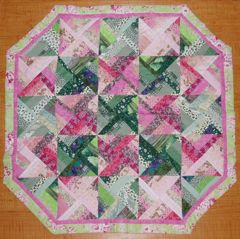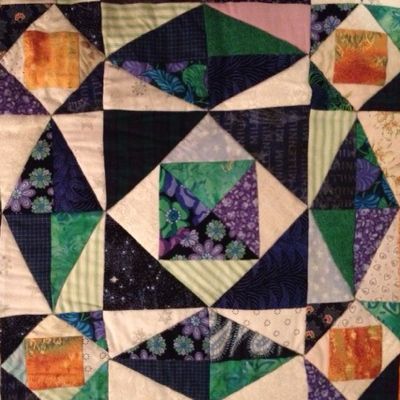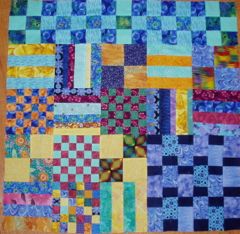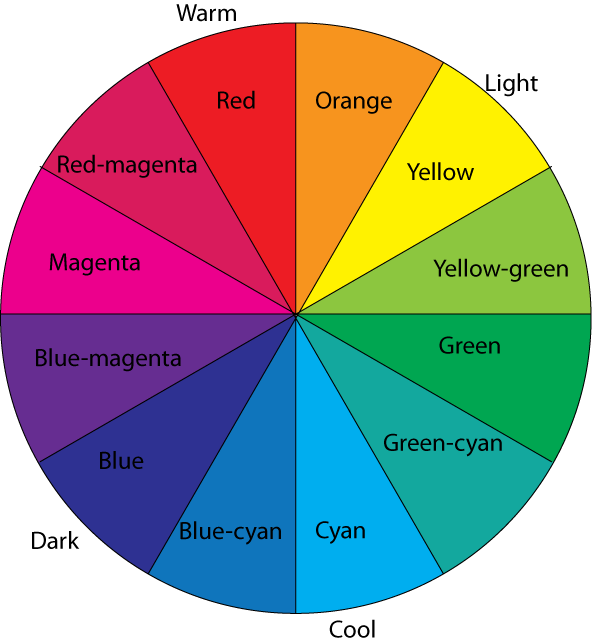
A-chromatic:
Black, white and neutral grey, may include white metal such as silver, chromium or stainless steel.
The example shows a group of achromatic fabrics. Made into a quilt they would probably look better if it included one bright (fully saturated) colour to add 'zing'
|

Monochromatic:
Tints, tones and shades of a single hue.
This baby quilt is a variety of blues from cyan through to blue on the colour wheel is a variety of tints and shades together with white for contrast.
|

Analagous:
Tints, tones and shades of about three hues adjacent to each other on the colour wheel.
This example is magenta round to cyan on the colour wheel.
|

Complementary:
Tints, tones and shades of any two colours opposite each other on the colour wheel.
This example is green and pink (which is really only a tint of magenta). |

Split complementary:
Any colour plus the colours either side of its complementary.
The example above is orange with a variety of blue, purples and greens. The dark colours are offset with whites, creams and very pale blues and greens. |

Triadic:
Three colours equally spaced from each other on the colour wheel.
Not a colour scheme I much, if I'm working from all around the colour wheel I prefer to use all the colours for a really scrappy look.
This label from the back of a quilt is cyan, magenta and yellow.
|

Tetradic:
Four colours, forming a rectangle within the colour wheel, ie red, yellow, blue and cyan or yellow, green, blue and magenta, or four colours forming a square within the colour wheel, ie red, yellow-green, cyan and blue magenta.
The scrap quilt contains all colours but the painted Beetle cars on the wall are the classic tetradic colours, red, yellow, green and blue. |

Hexadic:
Six colours equally spaced around the colour wheel, ie red, yellow, green, cyan, blue and magenta, but in effect all colours together.
This example does not have any moderating neutrals so it is a very bright quilt. |








